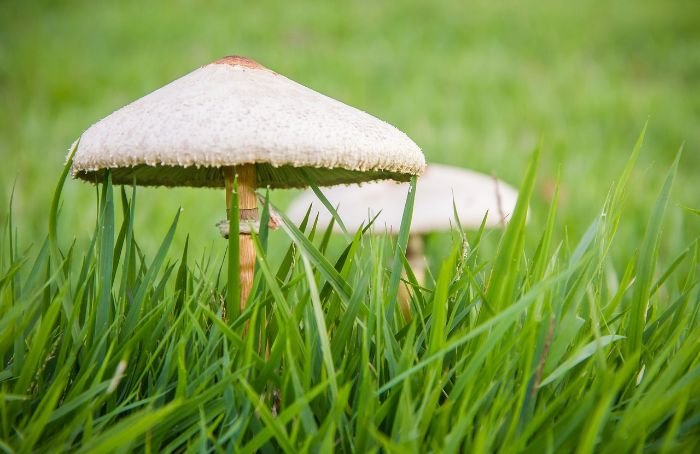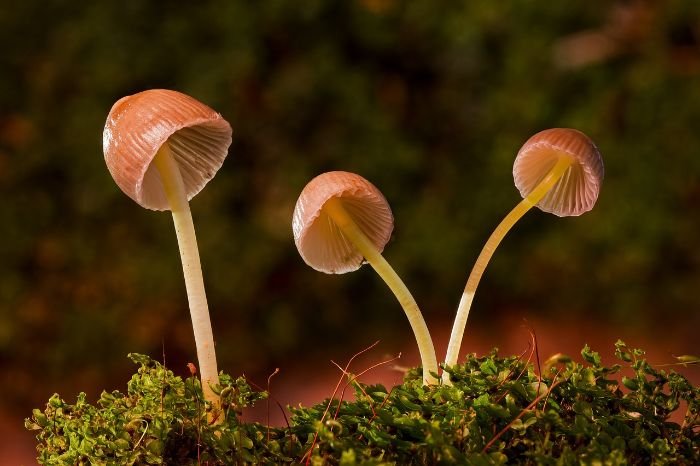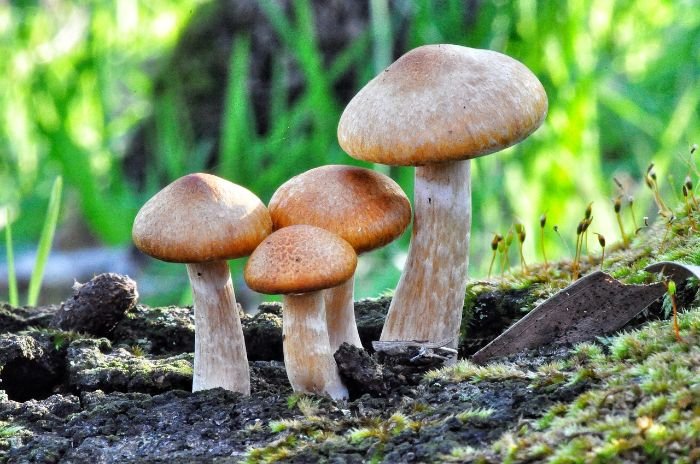Fungi possess a remarkable ability to restore polluted environments. Through the process of mycoremediation, fungal networks, primarily composed of mycelium, break down or neutralize hazardous substances such as oil spills, heavy metals, pesticides, and even radioactive waste. This biological intervention not only decontaminates affected areas but also rejuvenates the soil, enabling ecosystems to recover naturally.
Mycoremediation represents a crucial strategy for ecological restoration and sustainable agriculture. By leveraging natural fungal processes, we can address industrial pollution, remediate contaminated water, and promote healthier ecosystems. This method aligns closely with the principles of regenerative environmental practices, offering a scalable, nature-driven solution to modern pollution challenges.
Key Takeaways
- Mycoremediation leverages fungal networks to remediate soil and water contamination.
- Fungal metabolism transforms complex pollutants into environmentally benign forms.
- It serves as a foundation for ecological regeneration and sustainable land use.
- Enzymatic activity of fungi, particularly through laccases and peroxidases, drives effective biodegradation.
- Applications extend across agricultural soil rehabilitation, industrial site cleanup, and urban ecosystem restoration.
Table of Contents
Introduction to Mycoremediation
Mycoremediation is an advanced ecological technique that utilizes fungi to cleanse polluted environments. Through sophisticated biochemical processes, fungi either break down contaminants into harmless byproducts or immobilize them within the soil structure. Unlike phytoremediation, which relies on plants, fungi offer a broader enzymatic toolkit, making them uniquely suited for complex environmental challenges.
What is Mycoremediation?
Mycoremediation involves the strategic application of fungal species to degrade, transform, or stabilize pollutants in the environment. Fungi excel at breaking down complex organic compounds, such as hydrocarbons and industrial chemicals, while also binding heavy metals to reduce their bioavailability. This approach significantly enhances ecosystem resilience and promotes long-term environmental recovery.
Importance of Soil Health
Healthy soil underpins the vitality of ecosystems, supporting plants, fungi, animals, and microbial communities. Beyond serving as a foundation for agriculture, robust soil systems play a critical role in water purification, carbon sequestration, and biodiversity preservation. Techniques such as mycoremediation contribute to soil regeneration, enhancing food security and promoting sustainable land stewardship.
The Role of Fungi in Soil
Fungi are integral to soil ecosystems, acting as primary decomposers of organic matter and facilitators of nutrient cycling. Through their expansive mycelial networks, fungi enhance soil structure, increase water retention, and promote microbial diversity. Their symbiotic relationships with plants and microorganisms are critical for maintaining soil fertility and enabling effective bioremediation.
The Ecological Role of Fungi in Soil Systems
Fungal communities are fundamental to soil ecosystem balance. They decompose organic residues, releasing essential nutrients that fuel plant growth. Their mycelial structures create networks that improve soil aeration and moisture retention, fostering diverse microbial habitats. Additionally, fungi play a pivotal role in breaking down recalcitrant organic pollutants, contributing directly to bioremediation processes.
Types of Fungi Used in Mycoremediation
A range of fungal species are employed in mycoremediation strategies. Oyster mushrooms (Pleurotus ostreatus) and turkey tail fungi (Trametes versicolor) are particularly effective due to their ability to degrade lignin, a complex organic polymer often associated with persistent pollutants. Additionally, endophytic fungi, which reside symbiotically within plants, contribute to ecosystem resilience by enhancing plant health and mediating environmental stressors.
How Mycoremediation Works
Mycoremediation operates through the metabolic pathways of fungi, enabling them to decompose or neutralize hazardous pollutants. Central to this process is enzymatic biodegradation, wherein fungi produce specific enzymes, such as laccases and manganese peroxidases, that dismantle complex molecular structures into less toxic forms. This biochemical approach allows fungi to target a wide range of environmental contaminants effectively.
Mechanisms of Fungal Degradation
At the heart of mycoremediation lies the metabolic versatility of fungi, particularly white-rot species. These fungi secrete oxidative enzymes, including laccases, lignin peroxidases, and manganese peroxidases, which enable the breakdown of recalcitrant pollutants such as polycyclic aromatic hydrocarbons (PAHs) and chlorinated compounds, as documented in a 2019 review published in Biotechnology Reports on fungal bioremediation mechanisms.
This enzymatic arsenal positions fungi as highly effective agents in treating persistent environmental toxins.
Fungi’s Contribution to Toxin Degradation and Soil Recovery
Fungi play a central role in transforming toxic compounds into less hazardous forms. White-rot fungi, among the most studied for bioremediation, excel at degrading persistent organic pollutants and immobilizing heavy metals, thereby reducing their environmental toxicity. Through enzymatic oxidation and bioaccumulation mechanisms, fungi offer a promising, low-impact method for remediating diverse contaminated environments and fostering ecological restoration.
Benefits of Mycoremediation
Mycoremediation provides extensive environmental, agricultural, and economic benefits. Beyond detoxifying polluted sites, it enhances soil fertility, supports biodiversity, and offers a cost-effective alternative to traditional remediation technologies.

Environmental Benefits
Mycoremediation significantly accelerates natural restoration processes by breaking down pollutants and rehabilitating ecosystems. It reduces chemical loads in soil and water, promotes the resurgence of native plant and animal species, and enhances environmental resilience. This method strengthens ecosystems, making them more resistant to future stressors.
Economic Advantages
Mycoremediation is a cost-effective solution compared to conventional remediation methods, which often require intensive energy use and chemical treatments. By utilizing natural biological processes, it reduces operational costs for municipalities, industries, and agricultural sectors, making environmental restoration both affordable and sustainable.
Enhancing Soil Fertility
Beyond pollutant degradation, mycoremediation actively restores soil fertility. Fungi facilitate nutrient cycling, enhance organic matter decomposition, and improve soil structure, creating optimal conditions for plant growth. Healthier soils translate into increased agricultural productivity and long-term food security.
Applying Mycoremediation Techniques in Home Gardens
Introducing mycoremediation into a home garden offers a practical way to enhance soil quality and promote ecological balance. Success depends on selecting appropriate fungal species, establishing suitable growing conditions, and maintaining an environment that supports sustained fungal activity.
Selecting the Right Fungi
Choosing the right fungal species is crucial for effective mycoremediation. Oyster mushrooms (Pleurotus ostreatus) and turkey tail fungi (Trametes versicolor) are excellent options due to their strong ligninolytic abilities, making them suitable for breaking down organic pollutants and improving soil microbiology.
Steps to Introduce Fungi into Your Soil
Inoculate the soil by introducing fungal spores or mycelial cultures, ensuring the substrate matches the moisture and nutrient requirements of the selected fungi. Incorporating well-decomposed compost can significantly enhance colonization by providing a nutrient-rich and structurally supportive environment.
Monitoring and Maintenance
Ongoing monitoring is critical to the success of mycoremediation efforts. Regularly assess soil pH, temperature, moisture levels, and pollutant concentrations to ensure optimal fungal activity. Practices such as mulching and maintaining consistent soil hydration are essential for sustaining fungal health and maximizing remediation efficiency.
Challenges and Considerations
Despite its potential, mycoremediation faces several challenges, including environmental variability, species-specific effectiveness, and regulatory constraints. Successful implementation requires careful selection of fungal species and compliance with local environmental regulations.

Limitations of Mycoremediation
The effectiveness of mycoremediation is highly dependent on environmental conditions such as climate, soil composition, and temperature. Furthermore, the variability in fungal degradation capabilities can result in inconsistent outcomes, making it challenging to predict performance across different sites.
Potential Risks and How to Mitigate Them
Potential ecological risks associated with mycoremediation include the uncontrolled spread of introduced fungal species, which may disrupt native ecosystems. Risk mitigation strategies involve selecting non-invasive, site-adapted fungi and conducting regular environmental monitoring to assess fungal behavior and ecological impact.
Advancements and Future Prospects in Mycoremediation
Ongoing advancements in fungal biotechnology and environmental science are expanding the capabilities of mycoremediation. Researchers are optimizing fungal strains for enhanced pollutant degradation, developing innovative inoculation techniques, and integrating mycoremediation into broader ecological engineering projects. These developments signal a transformative role for fungi in future environmental remediation strategies.
“We are now seeing how genomic analyses can optimize fungal strains for specific pollutants, opening new pathways for environmental sustainability,” says Dr. Jane Smith, a leading expert in the field.
Using mycoremediation in cities is getting more attention. It fits well with the push for global sustainability. Also, it makes use of city spaces in smart ways for the environment. Better research is helping to solve problems and make mycoremediation a common green practice.
Emerging Research and Innovations
Cutting-edge genetic and genomic techniques are enhancing the metabolic capabilities of fungi, enabling targeted degradation of specific pollutants across diverse environmental conditions. Advances in metagenomics, synthetic biology, and bioprocess engineering are paving the way for customized mycoremediation solutions tailored to complex contamination scenarios.
- Application of genomic sequencing to engineer fungi for pollutant-specific degradation
- Integration of mycoremediation systems into urban green infrastructure for sustainable city development
- Advancement of ecological monitoring technologies to optimize in situ fungal remediation processes
Potential for Widespread Adoption
The scalability and cost-efficiency of mycoremediation position it as a viable mainstream solution for environmental restoration. Growing public awareness of sustainable practices, combined with successful pilot projects in urban and industrial settings, is accelerating the adoption of fungal-based remediation strategies on a global scale.
Additional Resources
For those interested in exploring mycoremediation further, a wealth of scientific literature and case studies are available. These resources provide in-depth analyses of fungal mechanisms, application methods, and successful remediation projects, offering valuable insights into the evolving field of fungal biotechnology for environmental recovery.
Experts in the field have written many helpful works about mycoremediation. They talk about how to practically use and understand it. This includes looking at various fungal studies, sharing real project examples, and discussing ways to improve.
Books and Articles on Mycoremediation
Numerous books, peer-reviewed articles, and technical reviews offer detailed insights into the mechanisms and practical applications of mycoremediation. Key resources include comprehensive analyses of fungal species, case-based evaluations of field projects, and discussions of the challenges and advancements within the discipline.
- Mycelium Running: How Mushrooms Can Help Save the World by Paul Stamets
- “Fungal Bioremediation of Heavy Metal Contaminated Soils” – Journal of Applied Microbiology
- Mycoremediation: Fungal Bioremediation edited by Harbhajan Singh
- Case Studies in Fungal Bioremediation – Environmental Science and Technology Review
If you’re keen on the role fungi can play in cleaning up our world, these resources are a must-read. They cover a wide range of topics. This includes the vast mycoremediation literature that’s out there today.
Conclusion – Advancing Soil and Ecosystem Health through Mycoremediation
Mycoremediation represents a forward-thinking approach to restoring soil vitality and fostering balanced ecosystems. By harnessing the natural capabilities of fungi, this method offers a sustainable, low-impact solution for environmental recovery, promoting resilience, biodiversity, and long-term ecological health.
Mycoremediation not only restores soil health but also strengthens the interconnected systems that sustain garden ecosystems. By fostering microbial diversity, improving nutrient cycling, and enhancing plant resilience, it supports environmentally responsible gardening practices and reinforces the broader principles of ecological stewardship.
As awareness of mycoremediation grows, its practical applications continue to expand across both urban and rural landscapes. Incorporating fungal remediation techniques into gardening practices enhances soil vitality, promotes biodiversity, and contributes to the resilience of local ecosystems, benefiting communities and natural habitats alike.
FAQ
What is mycoremediation?
Mycoremediation is the use of fungi to degrade, neutralize, or stabilize environmental contaminants through enzymatic and biochemical processes. This approach supports ecological restoration by reducing pollution levels and promoting soil and water health.
Why is soil health important?
Healthy soil is fundamental to sustaining plant growth, supporting biodiversity, regulating water cycles, and maintaining ecosystem stability. It is essential for food security, clean water resources, and long-term environmental resilience.
How do fungi contribute to soil ecosystems?
Fungi contribute to soil ecosystems by decomposing organic matter, facilitating nutrient cycling, improving soil structure, and enhancing moisture retention. Their mycelial networks form the backbone of healthy, resilient soil ecosystems.
What types of fungi are used in mycoremediation?
Species such as oyster mushrooms (Pleurotus ostreatus) and turkey tail fungi (Trametes versicolor) are commonly used in mycoremediation due to their lignin-degrading capabilities and ability to process complex organic pollutants. Certain endophytic fungi also enhance plant health and environmental resilience.
How does mycoremediation work?
Fungi secrete oxidative enzymes, such as laccases and peroxidases, that dismantle complex chemical structures, transforming pollutants into less harmful compounds. This enzymatic activity underpins the effectiveness of fungal-based environmental remediation.
What are the environmental benefits of mycoremediation?
Mycoremediation reduces environmental pollution, restores soil and water quality, enhances biodiversity, and supports the regeneration of damaged ecosystems. It offers a sustainable, low-impact alternative to conventional remediation methods.
How can I implement mycoremediation in my garden?
Select appropriate fungal species suited to your local soil conditions and the types of pollutants present. Inoculate the soil with spores or mycelium, maintain suitable moisture levels, and monitor soil health to support fungal establishment and ongoing remediation.
Where can I find more information about mycoremediation?
Extensive resources are available, including scientific books, peer-reviewed articles, and field case studies, which provide detailed guidance on the mechanisms, applications, and successes of mycoremediation practices.










